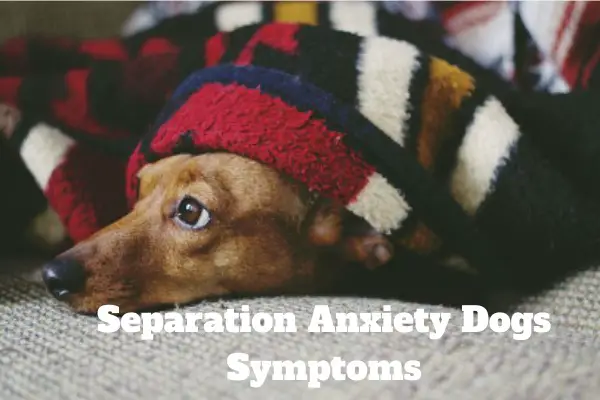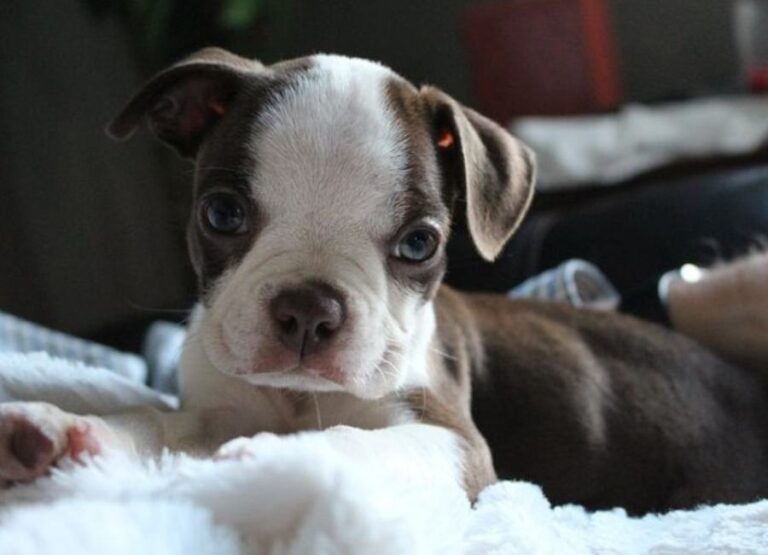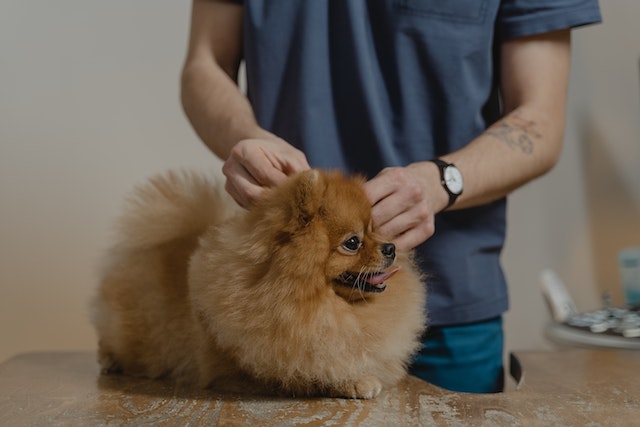15 Common Separation Anxiety Dogs Symptoms Explained

Many dog owners don’t even know anything about the separation anxiety dogs symptoms they should know and keep tabs on, that is what we will outline and discuss in this post.
As a dog owner for more than 13 years, I think in my experiences I have witnessed most of the separation anxiety symptoms you will see in this post.
Separation anxiety in dogs is just a state of mind a dog develops after being separated from their owners over a given period of time.
There are many causes of separation anxiety in dogs, which can lead to different behavior problems like biting, barking, nipping etc.
Separation Anxiety Dogs Symptoms
Here are all the most common symptoms of separation anxiety in dogs that dog owners should know and keep tabs on:
1. Excessive howling and barking on owner’s departure
Most dogs with separation anxiety will bark ceaselessly due to fear, frustration, stress, tension, and loneliness, which can be an issue for both you and your neighbors.
Separation anxiety develops over time in some dogs and might manifest within minutes of the owner’s departure in others.
When their owners go to work or someplace else, dogs with separation anxiety may bark excessively because they are terrified of being alone.
Therefore, if your dog begins to bark substantially more than normal when you leave or enter, you should be concerned.
If your dog begins to bark or howl each time you want to leave home, pay attention to other signs of separation anxiety.
Here are some common ways to help stop separation anxiety in dogs.
2. Excessive pacing on owner’s departure or arrival
When your dog starts pacing back and forth as you leave the house, it’s a sign that something is bothering them and they can’t rest which can be a sign of separation anxiety.
It may not be a major concern if your dog paces back and forth at mealtimes or for short periods when you’re out for a stroll.
You might be able to find out what’s making your dog frightened if you notice this behavior on a frequent basis, especially when you’re preparing to leave or when you come home.
3. Destructive chewing of valuables
When dogs are separated from their owners, they may scratch, chew, or destroy their belongings or toys.
When you get home, your dog may have eaten the table legs, doors, window sills, door frames, or even torn the couch or cushions.
Depression, stress, and loneliness are the most common causes of hazardous chewing, all of which can be induced by separation anxiety.
Chewing and digging in your house can result in injuries to dig, including as broken teeth, cuts, damage to its nails or paws, and even injury from broken furniture.
4. Excessive crying behavior on owners departure
Your dog may cry or whine at any time if he is furious, anxious, or suffering from separation anxiety.
Crying is nearly often followed by pacing if your dog can’t get away from the stressor or has separation anxiety.
It’s most likely stress if your dog isn’t barking because he has to go outside or is in discomfort.
When dogs are stressed out as a result of separation anxiety, their crying can grow out of control.
It is, however, an indication that something is wrong with your dog’s surroundings. Separation anxiety can manifest itself in a variety of ways, one of which is crying.
5. Frequent coprophagia when left alone
Coprophagia is a condition in which a dog defecates in the house and then eats it. It is usually a sign of separation anxiety in dogs.
This is a frequent occurrence when most dogs are left alone and agitated, but there may be additional medical issues.
It’s not uncommon for your dog to use the bathroom while you’re gone, whether it’s pee or feces.
When your dog has separation anxiety, he or she may wreak havoc in your home by pooping everywhere and eating the excrement.
6. Trying to escape on owner’s departure
When your dog is frightened or has separation anxiety, he will do all he can to go out of the house and find you or make some new pals.
Your dog may bang his head and teeth against the cage bars, injuring himself in the process, all in the name of pushing him to go because he is afraid.
When you leave the house, keep an eye out for your dog attempting to run.
This is a serious issue since it indicates that your dog is afraid of being alone, leading to separation anxiety.
7. Frequent potty accidents on owners absence
If your dog has been housebroken but still has accidents when you leave the house and come back to discover them.
This is a clear sign that your dog is worried about you while you’re away, and if not addressed, the situation will only get worse.
Keep an eye on your puppy or adult dog if he or she becomes afraid and begins eating his or her own faeces.
You may take efforts to avoid this symptom or just treat the underlying ailment that is giving your dog anxiety, no matter how unpleasant it is.
8. Frequent freezing on owner’s departure or arrival
When you get home from work or leave, your dog freezes or becomes rigid because he is afraid of being alone.
Freezing in your dog all of the time can be harmful to both you and your dog, since it can result in biting and other behavioral issues.
If your dog freezes as you walk away, he’s concerned and won’t be able to handle the situation, which might result in a bite.
When their owners leave or return, dogs with separation anxiety are known to freeze needlessly, which is a clear indicator of separation anxiety.
9. Self-isolation on owner’s departure or arrival
Self-isolation in most dogs can be prompted by a variety of circumstances, the most prevalent of which are separation anxiety and fear.
When a dog is scared, he may take sanctuary in a little chamber or a piece of the owner’s clothing that smells like him.
While curled up beneath the table or somewhere in the house, your dog may urinate inconveniently for hours.
If your dog starts hiding incessantly, don’t ignore it; instead, try to figure out why; it might be a health issue or separation anxiety.
This is one of the most visible signs of separation anxiety in most dogs.
10. Constantly scratching of doors or walls on owners absence
Most dogs experience tension and anguish when they are separated from their owners, which can lead to clawing at doors and walls.
You’ll notice your dog clawing the exit door as you leave for work if he has separation anxiety.
You may also see your dog clawing at the walls, which is a clear indicator of nervousness caused by being alone.
If you come home to find scratches on your walls or doors, your dog’s separation anxiety is causing aggravation.
11. Frequent digging on owner’s absence
Separation anxiety is one of the most prevalent causes of your dog digging up your yard, fence posts, bed, or basement.
When they are bored or have nothing else to do, they dig to keep themselves occupied and away from boredom or loneliness.
You must act if you return home to find your dog digging in your yard, cellar, bed, or fence base due to separation anxiety.
That’s a clear indicator that your dog is bored, and ignoring it will only make things worse.
12. Following owners around during departure
When your dog is afraid of being apart from you, he will do all in his power to get out of the home and locate you.
In an attempt to urge him to go because he is terrified of being alone, your dog may injure himself by banging his head and teeth against the cage bars.
If your dog tries to get out of the home every time you leave, don’t ignore it; it might lead to unwanted behavior.
This is a serious problem since it means your dog is terrified of being alone, which can be caused by separation anxiety.
13. Increased growling behavior
Your dog utilizes growling as a means of communication because they can’t tell you if it’s angry or uncomfortable using words.
Growling is a unique way for your dog to show his or her discomfort over time.
It might mean that someone is violating their personal space, has separation anxiety, is afraid, or is upset by anything.
It isn’t necessarily meant to be aggressive, but it is usually a warning that your dog is uncomfortable.
14. Excessively sleeping longer than usual
Something is definitely wrong when your dog, who generally sleeps for 6 to 8 hours at a time, sleeps for a long amount of time, such as 10 hours in a row.
If your dog’s behavior has unexpectedly changed and he prefers to hide and sleep alone, it’s a clear indication that something is wrong.
If your dog isn’t feeling well or is suffering from separation anxiety, don’t ignore them.
If you are sure your dog is not having any health challenges, and yet he hides and sleeps excessively, then he might be suffering from separation anxiety.
15. Tucked tail on owner’s departure or arrival
When a dog’s tail is dragged down, it means she is uneasy, uncertain, or fearful of a situation around him or her.
Your dog may become unclear whether or not to trust you if the tail is held just below the topline.
How far the tail is tucked is determined by the degree of fear and reinforcement expressed by the body language.
Keep in mind that if your dog’s tail is always tucked behind its abdomen, it means he or she is afraid of anything or being alone.
When your dog only does this on your departure or arrival, then look for other signs of separation anxiety too, just to be sure.
With the information provided on this page, I strongly believe your question or concerns about Separation Anxiety Dogs Symptoms were addressed!





![Cancer In Beagles Symptoms [10 Potential Symptoms] Cancer In Beagles Symptoms](https://petcreeks.com/wp-content/uploads/2023/05/Cancer-In-Beagles-Symptoms-768x555.jpg)
![How to Treat a Broken Dog Nail [A Step By Step Guide] How to Treat a Broken Dog Nail](https://petcreeks.com/wp-content/uploads/2023/09/igor-bumba-V9JMh9A-10E-unsplash.jpg)